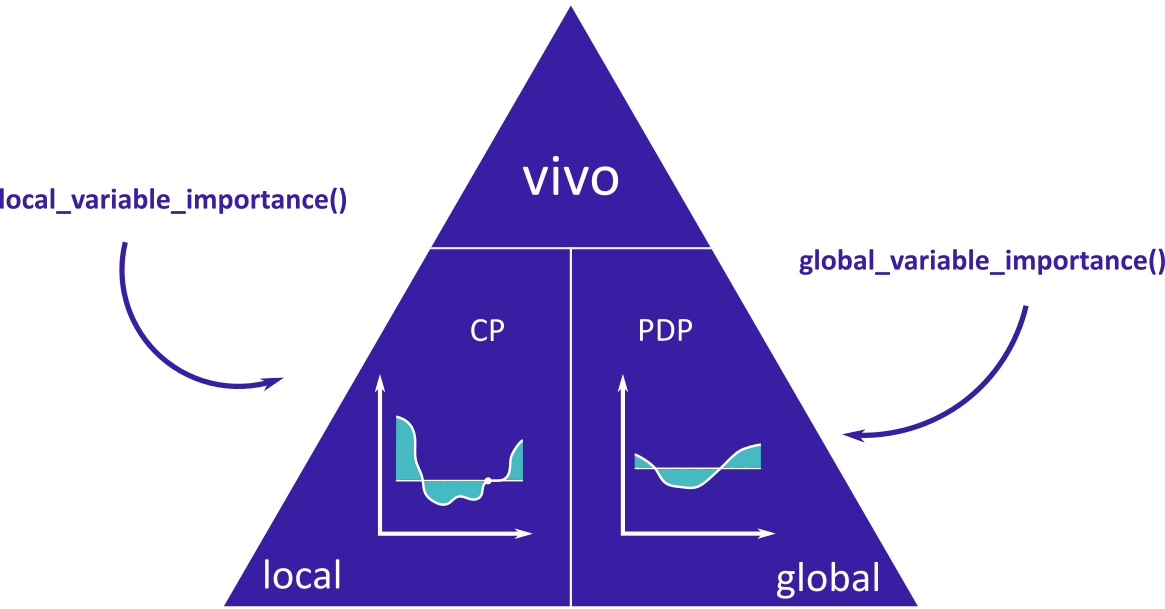
The hardware and bandwidth for this mirror is donated by METANET, the Webhosting and Full Service-Cloud Provider.
If you wish to report a bug, or if you are interested in having us mirror your free-software or open-source project, please feel free to contact us at mirror[@]metanet.ch.

The vivo package helps to calculate
- instance level variable importance (local sensitivity).
The measure is based on Ceteris Paribus profiles and can be
calculated in eight variants. Select the variant that suits your needs
by setting parameters: absolute_deviation,
point and density.
- model level variable importance (global sensitivity).
The measure is based on Partial Dependence Profiles.
The main functions are global_variable_importance() and
local_variable_importance().

vivo is a part of DrWhy collection of
tools for Visual Exploration, Explanation and Debugging of Predictive
Models.
From CRAN
install.packages("vivo")From GitHub
install.packages("devtools")
devtools::install_github("ModelOriented/vivo")Ceteris Paribus is a latin phrase meaning „other things held constant” or „all else unchanged”. Ceteris Paribus Plots show how the model response depends on changes in a single input variable, keeping all other variables unchanged. They work for any Machine Learning model and allow for model comparisons to better understand how a black model works.
The measure is based on Ceteris Paribus profiles oscillations. In particular, the larger influence of an explanatory variable on prediction at a particular instance, the larger the deviation along the corresponding Ceteris Paribus profile. For a variable that exercises little or no influence on model prediction, the profile will be flat or will barely change.
Here we have a similar intuition as above, but we are looking at Partial Dependence Profiles, because they show how the prediction changes for the model, not only for observation.
ceteris_paribus() from ingredientspartial_dependence() from ingredientsThe package was created as a part of master’s diploma thesis at Warsaw University of Technology at Faculty of Mathematics and Information Science by Anna Kozak.
These binaries (installable software) and packages are in development.
They may not be fully stable and should be used with caution. We make no claims about them.